
There are probably a couple of reasons I have never appeared in a musical by Rodgers and Hammerstein. The legendary team wrote quite a few musicals, but very few roles for a character actor like me. I would probably not turn down a role in one of their chestnuts, but it's unlikely I would ever fall in love with one. They are just too sugary sweet for my tastes.
The show from which the clip below is lifted has been seen by more than any other R&H collaboration, for the simple reason that it was written for, and originally broadcast on, television. In TVs early decades, all the Broadway stage composers wrote for the medium. Cole

 Porter did it with Aladdin (in fact, it was his final work), and placed Sal Mineo in the lead (Sal, by the way, appeared in one of the creepiest Dance Parties I've offered, check it out). Bock & Harnick did it with Oscar Wilde's The Canterville Ghost, Comden & Green did it with I'm Getting Married, and Jule Styne and Sammy Cahn did it more than once. Bacharach & David wrote On The Flip Side for pop star Ricky Nelson, and Barry Manilow turned his story song Copacabana into a vehicle for himself. Even Sondheim got into the act, with Evening Primrose, starring that musical theatre legend Anthony Perkins.
Porter did it with Aladdin (in fact, it was his final work), and placed Sal Mineo in the lead (Sal, by the way, appeared in one of the creepiest Dance Parties I've offered, check it out). Bock & Harnick did it with Oscar Wilde's The Canterville Ghost, Comden & Green did it with I'm Getting Married, and Jule Styne and Sammy Cahn did it more than once. Bacharach & David wrote On The Flip Side for pop star Ricky Nelson, and Barry Manilow turned his story song Copacabana into a vehicle for himself. Even Sondheim got into the act, with Evening Primrose, starring that musical theatre legend Anthony Perkins.You've probably never run across most of those, but the show provided by Rodgers and Hammerstein is fully remembered, Cinderella.

 After its initial broadcast, the team adapted the piece for the stage, where it is a perennial among high schools and amateur groups. It is the most saccharine of all their shows, and I find it hard to get through, but the original production, written for Julie Andrews and broadcast in 1957, is available on DVD and deserves a look (Andrews is a return visitor to the Friday Dance Party: here she is with Gene Kelly, and here with Mary Tyler Moore). The clip below features Andrews, natch, and her co-star Jon Cypher, who would go on to have a career as a character actor. You'll also glimpse Broadway stars Kaye Ballard and Alice Ghostly as the step-sisters, and the husband-and-wife team of
After its initial broadcast, the team adapted the piece for the stage, where it is a perennial among high schools and amateur groups. It is the most saccharine of all their shows, and I find it hard to get through, but the original production, written for Julie Andrews and broadcast in 1957, is available on DVD and deserves a look (Andrews is a return visitor to the Friday Dance Party: here she is with Gene Kelly, and here with Mary Tyler Moore). The clip below features Andrews, natch, and her co-star Jon Cypher, who would go on to have a career as a character actor. You'll also glimpse Broadway stars Kaye Ballard and Alice Ghostly as the step-sisters, and the husband-and-wife team of  Dorothy Stickney and Howard Lindsay as the royals (Edie Adams is not seen here, but appeared as the fairy godmother). The show has been remade a couple of times for television, notably with Leslie Ann Warren and Celeste Holm in the mid-60s.
Dorothy Stickney and Howard Lindsay as the royals (Edie Adams is not seen here, but appeared as the fairy godmother). The show has been remade a couple of times for television, notably with Leslie Ann Warren and Celeste Holm in the mid-60s.
I find the following clip interesting as it illustrates a pretty smart solution to a huge logistical problem director Ralph Nelson had. He had to squeeze 56 performers, 33 musicians, 80 crew members, 100 costumes, and four huge color TV cameras into a studio measuring 4200 square feet. His solution was to build high. Watch this clip with an eye to the stairs, as Nelson had his actors entering and exiting vertically, rather than horizontally. It gives the illusion of much more space than the production actually had.
Cinderella was broadcast live 53 years ago this week, on March 31, 1957, and though it was in color, the only print which survives is this black and white kinescope. It was estimated that 117 million people watched the show, making it, up to that time, the largest audience for any event of any kind in the history of the planet. Rodgers himself put it into perspective when he deduced that, had the show been presented onstage in a Broadway theatre, and filled 8 shows a week, it would take 140 years to match the original telecast's audience.
Musicals written for television have had a hard time in recent decades, with the exception of the High School Musical franchise Disney has created. Those shows have been adapted and are playing on stages all over the place. But I have doubts that those pieces will still be produced 53 years from now; Cinderella probably will be.
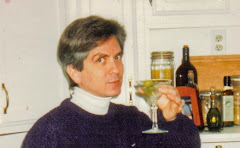
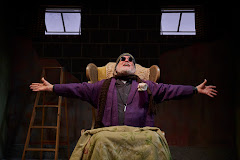




























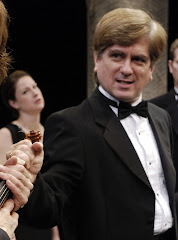
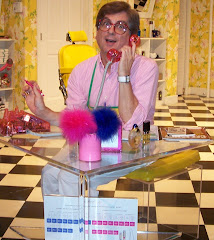
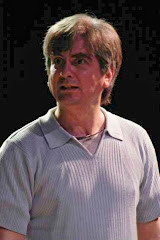
,+Olney+Theatre+Center,+2004.jpg)


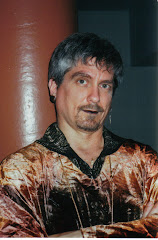
,+Shakespeare+Theatre+Company,.jpg)
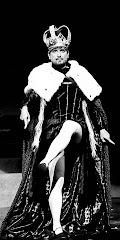

,+Warehouse+Theatre,+1999.jpg)
,+Are.jpg)
,+Everyman+Theatre,2002.jpg)
,+First+Nationa.jpg)
,+Shakespeare+Theatre+Company,.jpg)


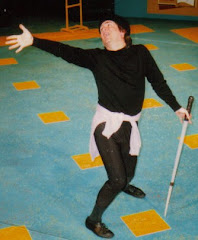
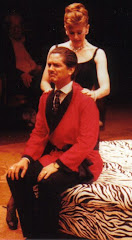
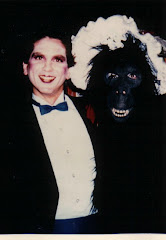
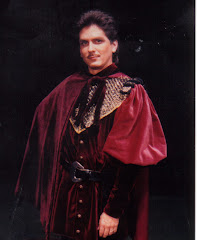
,+Granada+Th.jpg)
,+Globe+Playhouse,.jpg)
,+CSUN,+1976.jpg)
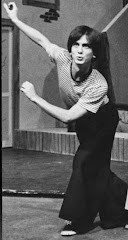


No comments:
Post a Comment